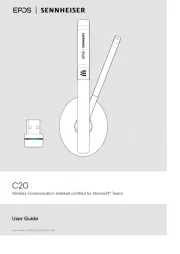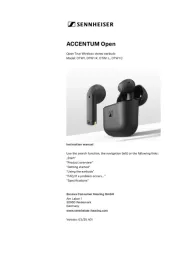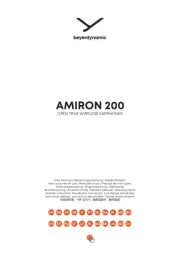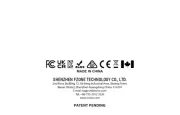Sennheiser Accentum Open Manual
Læs gratis den danske manual til Sennheiser Accentum Open (32 sider) i kategorien Øretelefon. Denne vejledning er vurderet som hjælpsom af 13 personer og har en gennemsnitlig bedømmelse på 4.2 stjerner ud af 7 anmeldelser.
Har du et spørgsmål om Sennheiser Accentum Open, eller vil du spørge andre brugere om produktet?

Produkt Specifikationer
| Mærke: | Sennheiser |
| Kategori: | Øretelefon |
| Model: | Accentum Open |
Har du brug for hjælp?
Hvis du har brug for hjælp til Sennheiser Accentum Open stil et spørgsmål nedenfor, og andre brugere vil svare dig
Øretelefon Sennheiser Manualer









Øretelefon Manualer
- Acoustic Research
- AT&T
- Bang And Olufsen
- Bose
- EarFun
- Orava
- Master & Dynamic
- Etymotic
- Uniden
- Jaybird
- NGS
- Jabra
- Xiaomi
- Maginon
- Manhattan
Nyeste Øretelefon Manualer









